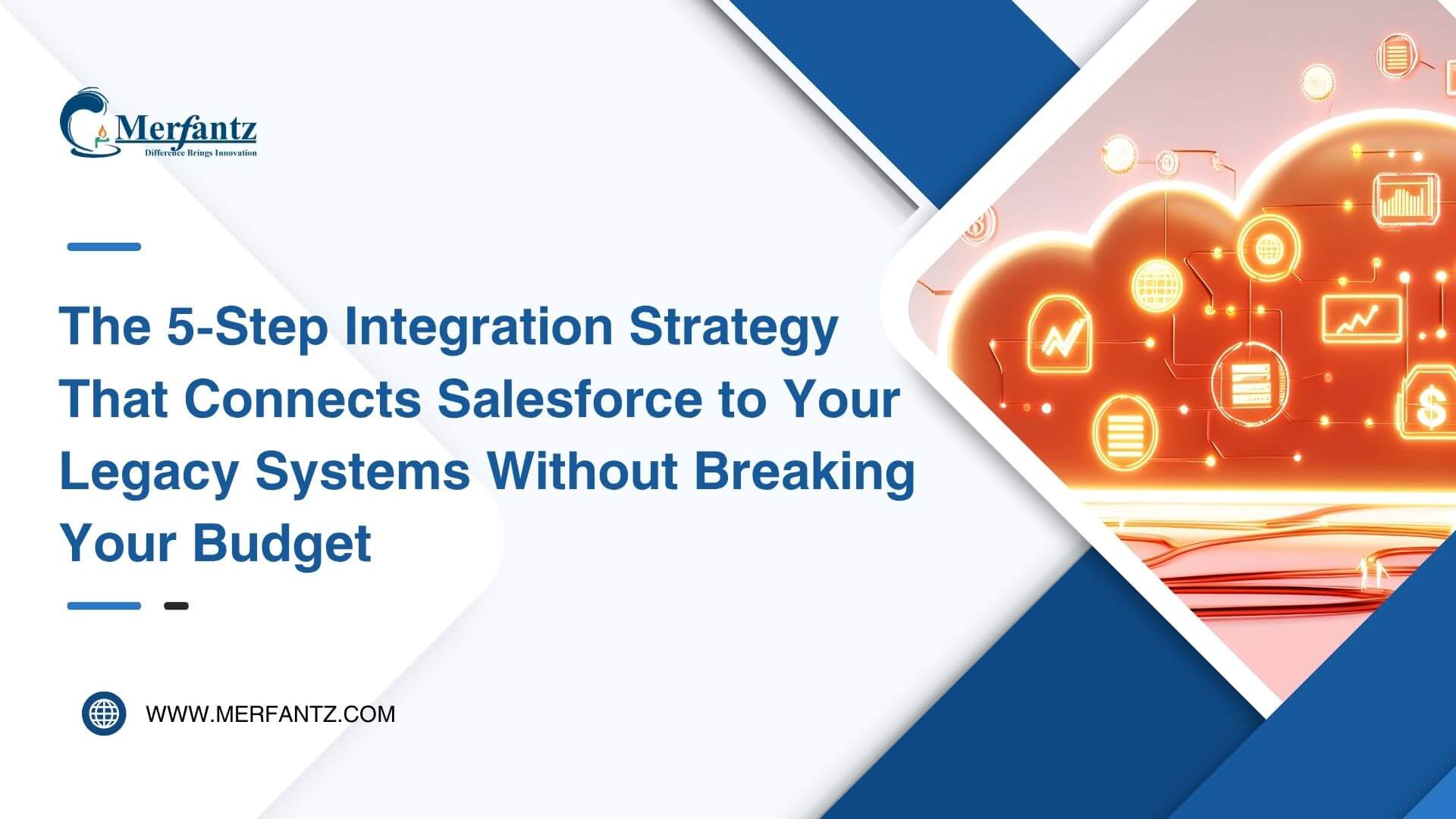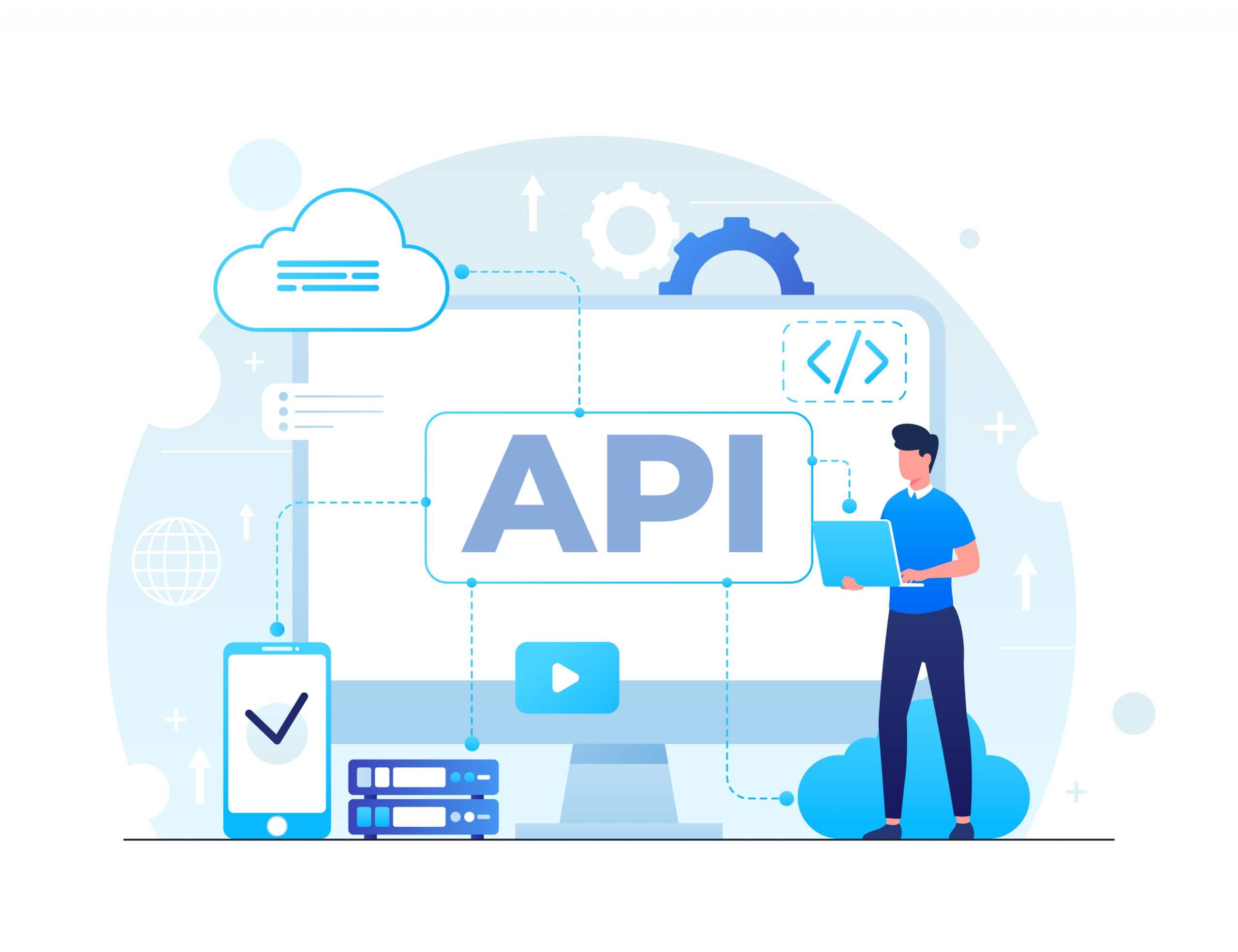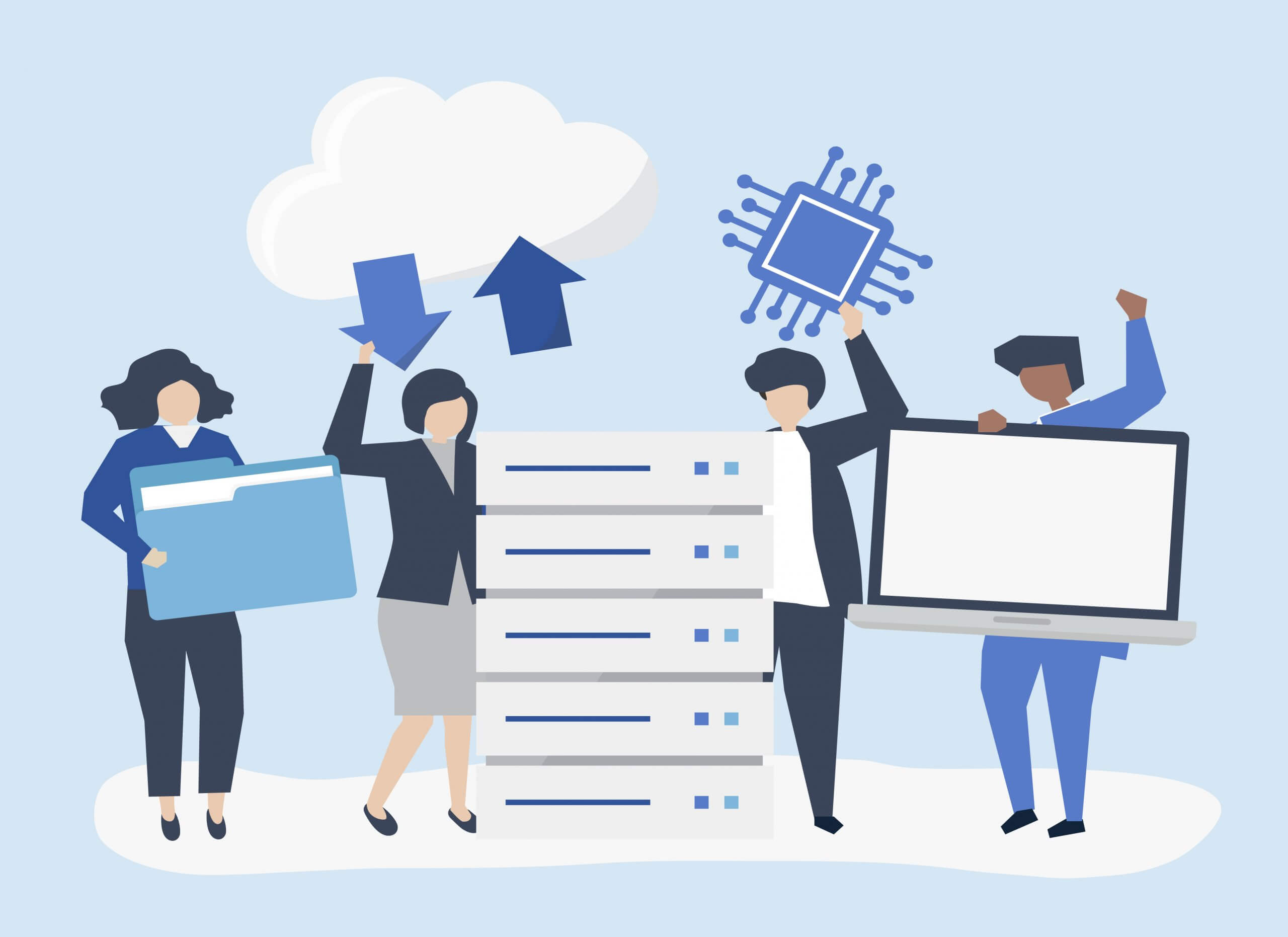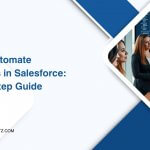
Surprising fact: 73% of enterprise projects stall because systems can’t share timely data, wasting budget and user trust.
I will show how I connect salesforce integration to legacy systems with a pragmatic, budget-first five-step strategy that cuts custom code and ongoing maintenance.
I align business goals with technical choices so data and process flows span multiple applications without duplication or runaway costs. I walk through decision points—direction (inbound vs outbound), timing (sync, async, batch), and architecture—so designs avoid brittleness.
I also preview the preferred platform capabilities for quick wins (REST/SOAP callouts, Outbound Message), high-volume needs (Bulk), and near-real-time use (Streaming). I address governance, security, DMZ, and compliance for U.S. enterprises up front.
Outcome: faster time-to-value, predictable API usage, fewer failure points, and clear success metrics tied to business requirements and user experience.
Key Takeaways
- I give a practical five-step process to link systems without overspending.
- Decision rules on direction and timing prevent fragile architectures.
- Use REST/SOAP and outbound messages for quick wins; use Bulk and streaming when needed.
- Governance, security, and compliance are built in from day one.
- I balance data movement with virtualization to control costs and speed.
Why I Designed a Budget-Friendly Strategy for Legacy System Integrations
Cost pressure forces smarter choices: I build lightweight links between legacy platforms and newer applications that deliver the biggest business impact first.
I avoid one-off projects that balloon into maintenance nightmares. Point-to-point connections multiply support work and hidden costs as systems grow. Hub-and-spoke or an ESB reduce connection sprawl and lower lifecycle spend.
I favor proven patterns and off-the-shelf connectors to cut development time. Low-code tools can buy quick wins for one-way alerts, but I note their limits—third-party data residency and one-way flows.
- Prioritize processes with the highest ROI so users see value quickly.
- Minimize the number of connections to control operational costs.
- Use data virtualization when copying information would create storage bloat.
- Balance early low-code wins with later API or middleware upgrades as volumes rise.
I set clear success metrics—latency, data freshness, error rates, and API consumption—to prevent scope creep and keep the project on budget. This approach pairs technical decisions with business requirements so integrations stay lean, reliable, and focused on delivering measurable value.
Note: I apply salesforce integration patterns only when they match the use case and cost profile.
Salesforce Integration Fundamentals I Rely On
I rely on clear timing and direction rules to keep cross-system work predictable and low-cost. First, I name the initiator: inbound means an external system calls my platform; outbound means my platform calls an external system.
Inbound vs. Outbound
I map inbound calls to legacy scenarios like mainframe validations or ERP updates where the external system owns the workflow. Outbound suits events I need to push, such as notifying an ERP after a record change.
Timing: sync, async, and batch
Synchronous calls require a wait-for-response and work best for immediate checks—address validation is a common example.
Asynchronous flows let the user proceed while background jobs handle heavy work or event-driven notifications. This protects transaction performance.
Batch processes handle large datasets on a schedule using ETL or Bulk APIs. I plan windows, throughput, and whether to run serial or parallel to avoid downstream locks.
- I quantify latency per process and match timing to user experience and data accuracy.
- I design APIs with payload limits, retries, idempotency, and backoff to improve resilience.
- I document initiator systems, expected responses, and error states so operations run smoothly.
Choosing the Right Integration Architecture: Point-to-Point, Hub-and-Spoke, or ESB
A minimal architecture that matches current volume and change rates saves money and friction later.
Point integration works when two systems talk rarely, payloads stay stable, and change velocity is low. I pick this for quick, one-off links because setup is fast and costs stay small.
As the number of connected systems grows, point-to-point multiplies connections and support work. I pivot to a hub model to reduce that sprawl.
Hub-and-spoke to reduce connections and cost
The hub centralizes routing so each system connects once to the hub. That cuts maintenance and simplifies transformations.
However, a hub can become a single point of failure. I plan failover, monitoring, and staging to mitigate that risk.
Enterprise Service Bus for routing, orchestration, transformation, and security
An enterprise service bus or service bus builds on the hub by adding orderable orchestration, schema transformation, and policy-based security. I use adapters to simplify plug/unplug changes for legacy systems.
ESB platforms need operational resources and can struggle with massive batch volumes. For heavy loads I add ETL or parallel bulk tools.
- I choose point integration when touchpoints are few and stable.
- I move to a hub as connections grow to trim maintenance.
- I adopt an ESB when I need routing, transformation, and centralized policy enforcement.
- I phase hub or ESB rollout to avoid upfront overengineering.
- I design adapters and mediation logic to minimize interface rewrites.
- I enforce shared transformations and a canonical model to control costs.

APIs That Do the Heavy Lifting: REST, SOAP, Bulk, and Streaming
APIs shape how systems exchange data, respond to events, and keep user flows smooth. I pick the style that matches timing, payload size, and the expectations of the calling system.
REST for lightweight web and mobile apps
REST uses standard HTTP methods (GET, POST, PUT, PATCH, DELETE) and commonly serializes payloads as JSON or XML. It’s typically synchronous and ideal for web and mobile applications where stateless, low-bandwidth calls matter.
SOAP for formal contracts with older remote systems
SOAP relies on WSDL contracts and strict XML schemas. I use it when a legacy web service requires guaranteed structure, WS-* features, or strong server-to-server validation.
Bulk API for high-volume data and scheduled loads
Bulk is asynchronous and optimized for tens of thousands to hundreds of millions of records over a rolling 24 hours. I plan jobs with automatic batching, monitor progress, and choose serial or parallel modes to manage locks and throughput.
Streaming and event-driven patterns for near real-time integration
Streaming uses publish/subscribe (CometD, PushTopic, Platform Events, Change Data Capture) for near real-time notifications. I use it to decouple systems and push messages when low latency matters.
- I map APIs to timing: synchronous for quick validations, asynchronous for heavy processing, and event-driven for decoupled flows.
- I enforce consistent payload formats, parse responses reliably, and apply idempotency plus retry strategies to avoid duplicates.
- I account for limits, compression, caching, and cross-origin rules so apps stay performant and resilient.
My Five-Step Integration Strategy for Legacy Systems on a Budget
My five-step roadmap focuses on delivering measurable value fast while keeping operational costs low. I start by inventorying processes, data entities, and user journeys to set priorities and define clear requirements for each workstream.
Assess and prioritize business processes, data, and user requirements
I map which processes must move first, which data is authoritative, and what users expect for latency and accuracy. This reduces scope and targets quick wins.
Pick the integration pattern
I match each process to request-reply, fire-and-forget, batch sync, remote call-in, streaming UI updates, or data virtualization based on volume and ownership.
Select the minimal architecture that scales
I choose point-to-point for small scopes, hub-and-spoke to reduce connections, and an enterprise service bus or service bus only when mediation and transformation justify the cost.
Choose capabilities and tools
I favor native APIs (REST, SOAP, Bulk, Streaming), Salesforce Connect for virtualization, Heroku Connect for Postgres sync, and low-code tools for simple one-way alerts.
- Design cost controls: API budgets, storage avoidance, and shared transformations.
- Define governance, versioning, and audit rules up front.
- Set security baselines (authN/authZ, DMZ, secrets) and bake in monitoring and retries.
I tie success metrics—latency, error rates, and data freshness—to each step and iterate in small releases to stabilize before scaling.
Step One: Define Clear Requirements and Success Metrics
I start by turning business needs into testable technical requirements and measurable metrics. Clear answers on who starts a flow, which two applications share records, and where authoritative data lives prevent rework.
Map processes across the two applications and systems of record
I document end-to-end flows, annotate the initiating system, and mark the authoritative record for each data entity. That makes it clear where updates originate and who owns reconciliation.
Decide latency needs: real-time integration vs. scheduled sync
I define whether the process needs true real-time integration or a scheduled sync window. For user-facing actions I tag steps as synchronous or asynchronous so UI expectations match backend behavior.
- I quantify volumes and concurrency to guide API and batch sizing.
- I set measurable metrics: p95 latency, allowable error rates, and recovery time objectives.
- I capture legacy constraints and create a traceability matrix linking requirements to tests and dashboards.
- Align stakeholders on data quality, duplicate handling, and accept/reject rules.
- Prioritize requirements to phase delivery and deliver early value without overextending scope.
- Annotate inbound vs outbound calls to remove ambiguity during design and testing.
Step Two: Select Integration Patterns That Fit Legacy Constraints
I match integration patterns to the constraints of legacy platforms so each flow stays reliable and low-cost. Choosing the right approach depends on who owns the data, the available endpoints, and whether users must wait for a response.
Remote call-in: Use this when a remote system must create, read, update, or delete records in my platform. Secure APIs, auth, and throttling rules protect the process remote system and prevent overload.
Request and reply: I apply this when users need an immediate validation (for example, an address check) and can wait response before continuing. I design clear error messages and timeouts so the UI behavior stays predictable.
Fire and forget: For decoupled notifications I favor patterns that acknowledge receipt without waiting. Platform Events or outbound messages cut coupling and lower runtime costs.
Batch data synchronization and data virtualization: For large volumes I schedule nightly or weekly jobs to handle data synchronization and avoid daytime locks. For read-mostly records I adopt data virtualization to surface external data without copying or reconciling it locally.
- I document error handling per pattern: retries for async flows, explicit surfacing for sync calls, and idempotency for batches.
- I factor legacy constraints—limited endpoints, call windows, and throughput—into each choice.
- I validate patterns with small pilots to confirm behavior under real-world load and align them to security and audit requirements.
Step Three: Architect for Simplicity First, Scalability Next
I design for the smallest viable topology that solves the problem and defers complexity. A hub-and-spoke pattern centralizes routing and cuts the number of direct links compared to point-to-point setups.
Start with a hub to prevent connection sprawl. That keeps operational overhead low while teams validate flows and volumes.
Start with hub-and-spoke before committing to an enterprise service bus
The hub handles routing and minor transformations with minimal ceremony. When needs grow—multiple consumers, heavy orchestration, or strict policy enforcement—I evaluate an enterprise service bus or service bus model.
Use mediation and message routing only where it adds value
I deploy mediation and message routing selectively. Use them when they reduce repeated transforms, enforce security rules centrally, or simplify complex business choreography.
- I design abstractions so endpoints can be swapped without breaking consumers.
- I quantify ESB needs: diverse transforms, orchestration, and centralized security must justify its run cost.
- I plan message policies: replay handling, dead-letter queues, and observability from day one.
- Compare hub vs ESB TCO and forecast growth to keep costs predictable.
- Add ETL for large batch moves where a service bus would be inefficient.
- Document upgrade and deprecation paths so future swaps don’t trigger costly rework.
Step Four: Implement with the Right Salesforce Capabilities
I focus on using built-in platform features that deliver safe, maintainable connections without heavy custom code. This keeps costs low and operations predictable while meeting latency and volume needs.
REST and SOAP callouts for quick wins
I use web service callouts when my system must initiate a call to an external system. REST suits lightweight API requests and quick responses. SOAP fits legacy endpoints needing strict contracts.
Outbound Message for low-code, asynchronous notifications
For low-code event delivery I use Outbound Message. It sends SOAP notifications with built-in retries and simple admin alerts when an endpoint does not acknowledge a response.
Salesforce Connect for data virtualization
Data virtualization via External Objects reduces storage and reconciliation. I surface external records for lookups and reports without copying data into the core tenant.
Heroku Connect for high-volume sync
When throughput and low latency matter, I sync selectively to Postgres with Heroku Connect. That offloads heavy workloads while keeping bi-directional flows where needed.
- I define payload contracts, size limits, and timeout thresholds to avoid cascading retries.
- I secure endpoints with least-privilege auth and network controls consistent with enterprise policy.
- I monitor callouts, queue backlogs, and sync status, and version interfaces to evolve safely.
Step Five: Secure, Monitor, and Optimize
I lock down exposed endpoints behind a hardened perimeter and bake monitoring into every message path. A DMZ provides an extra layer between the public internet and private networks so external calls route through a controlled edge before reaching internal systems.
Authentication, authorization, and the DMZ
I implement strong authN and authZ aligned to enterprise standards and put exposed services behind the DMZ. This reduces attack surface and centralizes policy enforcement.
I also use least-privilege credentials, mutual TLS where applicable, and short-lived tokens to meet audit requirements.
Throughput, retries, and backoff
I design for throughput with queueing, concurrency limits, and back-pressure to prevent bottlenecks. Middleware handles asynchronous buffering so peak spikes don’t crash downstream systems.
Standardized retries with exponential backoff prevent message storms and improve the chance of a successful response without overwhelming remote endpoints.
Cost controls, monitoring, and operational readiness
I control costs by budgeting API consumption, right-sizing ESB instances, and preferring virtualization to reduce core data storage. Monitoring focuses on latency, error rates, and queue depths tied to business SLAs.
- I ensure auditability with structured logs, correlation IDs, and immutable event histories.
- I perform capacity planning, load testing, and define incident runbooks with replay and data-fix steps.
- I schedule periodic reviews to tune batch sizes, indexes, and caching and to adapt integration patterns as requirements evolve.
Event-Driven Architecture: When I Move from Request/Response to Events
I move to events when multiple consumers need the same updates without tight coupling to the requester. This shift decouples producers and consumers and enables near real-time integration across systems.
Platform Events, Change Data Capture, and PushTopic use cases
PushTopic fits simple UI-driven streams that filter records with SOQL. Platform Events handle custom domain messages with defined schemas. Change Data Capture (CDC) publishes record-level changes in real time without SOQL, giving a comprehensive change feed.
Designing publish/subscribe flows across multiple applications
I design channels with clear schemas, retention windows, and replay policies where supported. Streaming APIs like CometD or an enterprise messaging bus carry messages to subscriber applications reliably.
- I plan subscriber scaling, idempotent consumers, and delivery guarantees to handle redeliveries.
- I align topics to business domains, secure channels, and limit sensitive fields in messages.
- I define ordering expectations, compensating actions, and add monitoring for latency, consumer lag, and subscription health.
I test bursts and document lifecycle and versioning rules so the event model can evolve safely without breaking downstream applications.
Low-Code and No-Code Connectors to Stretch the Budget
When fast alerts matter more than deep control, low-code tools buy time. Zapier and Make.com let me automate simple flows without heavy development. They accelerate delivery for one-way notifications and marketing automations so teams see value quickly.
Zapier and Make.com for quick automations
Zapier connects to 5,000+ apps and sends one-way notifications using webhooks and API calls. It’s great for alerts and light workflows, but multi-step two-way automations often require several Zaps.
Make.com provides richer low-code orchestration and works well for marketing journeys or operations playbooks. Both host data on third-party systems, so I treat them as non-authoritative for sensitive records.
When to graduate to APIs, ESB, or ETL
I use these tools for non-critical paths and pilot projects. I define clear guardrails: no PII when policy forbids it, ownership for failed runs, and standardized naming and retry rules to reduce support friction.
- I monitor logs, alerts, and dashboards so silent failures don’t hide business impact.
- I factor vendor costs and rate limits into total cost of ownership projections as usage grows.
- I pilot flows, then re-platform to native APIs, an ESB, or ETL when volumes, error rates, or governance needs increase.
- I ensure visibility into runs and require clear ownership for remediation.
- I limit third-party data residency for regulated information and sensitive records.
- I document an integrations catalog so teams know what runs where and how to request changes.
Data Synchronization vs. Data Virtualization
I weigh copying records against virtual access based on cost, performance, and business needs. Copy data when analytics, historical reporting, or offline queries require stable snapshots. I prefer virtualization when read access suffices and duplication would add storage or reconciliation work.
When to copy data for analytics vs. when to virtualize
I use Salesforce Connect for real-time access to external records via External Objects so reports and lookups work without storing rows in the core tenant.
I adopt Heroku Connect when I need bi-directional sync to Postgres for high throughput and low latency. That keeps only highlights in the platform while supporting heavy workloads elsewhere.
- I schedule batch data synchronization with Bulk API for large datasets and define conflict resolution rules.
- I align strategy to SLAs: data freshness, latency tolerance, and availability targets drive the choice.
- I measure total cost — storage, API consumption, and ops overhead — versus query performance benefits.
- I tag the authoritative system of record and document reconciliation paths for exceptions.
- I test dashboards against virtualized records to confirm performance and usability meet user needs.
I document criteria to revisit decisions as volumes, query patterns, or compliance rules change so the approach stays aligned to evolving business priorities.
Governance, Security, and Compliance in the United States
I treat governance and controls as first-class parts of every project. That reduces risk and keeps integrations auditable for U.S. regulations. My checklist covers access, logging, protected channels, and formal change processes.
Role-based access, auditability, and protected data flows
I enforce role-based access across the core tenant and connected systems so each user has the least privilege needed. This limits exposure and simplifies reviews.
I enable immutable audit logs for all data access and changes. Those records support investigations and show proof of compliance when regulators ask.
Protected flows route externally exposed endpoints through a DMZ and middleware. The edge separates the public internet from private networks and centralizes event processing, queuing, and transformations.
- I standardize API versioning and change management to avoid breaking dependent processes.
- I document data classification and handling rules for sensitive information across every connection.
- I apply encryption in transit and at rest to match organizational policies and compliance needs.
- I centralize secrets management and rotate credentials on a schedule to reduce exposure.
- I define approval workflows for high-risk changes and production data fixes.
- I monitor for anomalies—unexpected spikes and access patterns—and feed alerts into SIEM tooling.
- I review governance regularly to reflect changing regulations and evolving business requirements.
Result: predictable controls, clear evidence trails, and safer processes that let the business move faster without adding undue risk.
Salesforce Integration
My goal is to show how APIs and messaging tie disparate software into predictable, testable workflows across interfaces. I describe how connections span the user interface, business logic, and data layers so applications behave as one coordinated set of systems.
Application programming interfaces standardize communication by defining contracts, payloads, and error behavior. That consistency reduces custom code and speeds troubleshooting.
- REST, SOAP, Bulk, Streaming: pick REST for lightweight, low-latency calls; SOAP for strict contracts; Bulk for high-volume batches; streaming for near real-time events.
- Outbound Message & Web Service Callouts: use low-code messages for simple pushes; use callouts when code-driven, authenticated interactions are required.
- Salesforce Connect & Heroku Connect: virtualize reads to avoid copies or sync selective data to Postgres for heavy throughput.
- ESB / enterprise service: bring it in when routing, orchestration, and policy enforcement across many applications justify the run cost.
I tie choices to inbound vs. outbound and sync vs. async needs so user experience and system constraints match. I follow my five-step approach and enforce governance, security, and monitoring so operations stay sustainable. Event-driven designs are the natural growth path when multiple consumers need decoupled, timely updates.
Conclusion
Close the project by focusing on one high-impact process, then use measured rolls to scale patterns and costs.
I recap my five-step approach: prioritize requirements, pick patterns, choose a simple architecture, use the right APIs, and secure plus monitor every flow.
I prefer point-to-point for small tasks, hub-and-spoke as connections grow, and an ESB only when orchestration justifies the run cost. Match request-reply, fire-and-forget, batch sync, remote call-in, or data virtualization to actual needs.
Use REST/SOAP for quick web callouts, Bulk for large loads, and Streaming for near real-time updates. Protect endpoints with a DMZ, strong auth, and continuous monitoring. Track cost controls—API budgets, storage, and ESB footprint—and define success metrics. Start with one measurable win, stabilize it, then iterate across applications for sustainable growth.
FAQ
What are the first steps I should take when connecting a CRM platform to legacy systems on a tight budget?
How do I decide between synchronous, asynchronous, and batch models for remote system calls?
When is a point-to-point connection acceptable versus a hub-and-spoke or ESB?
Which API types should I prefer for lightweight mobile apps and which for older remote systems?
How can I keep costs down while ensuring scalability over time?
What patterns work best when the legacy system must drive create/read/update/delete actions in my CRM?
When should I use data virtualization instead of copying data for analytics?
How do I secure integrations between enterprise apps and external systems in U.S. environments?
What monitoring and retry strategies should I implement to avoid lost messages?
When are low-code connectors like Zapier useful and when should I switch to APIs or an ESB?
Author Bio
Co-Founder & CMO at Merfantz Technologies Pvt Ltd | Marketing Manager for FieldAx Field Service Software | Salesforce All-Star Ranger and Community Contributor | Salesforce Content Creation for Knowledge Sharing






